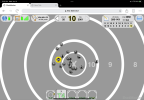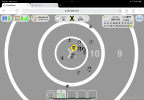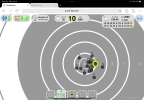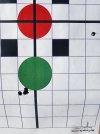X2X2!
New brass is an OCD conundrum for me as well. I look inside every piece to make sure no debris which I find even in premium brass, measure headspace, chamfer mouth, basically set brass to my liking not whats in box or bag. You have your own steps to reload so why wouldn't new brass be part of it?
-
If you are being asked to change your password, and unsure how to do it, follow these instructions. Click here
You are using an out of date browser. It may not display this or other websites correctly.
You should upgrade or use an alternative browser.
You should upgrade or use an alternative browser.
Reloading new brass?
- Thread starter Straight Shooter
- Start date
 Help Support Long Range Hunting Forum
Help Support Long Range Hunting Forum
Hope your wife mends 100%. Everything in life is an education. I have always thought that when we stop learning or think we know everything, we get dangerous. Stay safe and have fun.OFF TOPIC
l have learned MUCH this year preparing for a prairie dog shoot that got canceled due to wife's illness. My groups show it too. Even @ age 77 l am still learning. l have continued to shoot and load in spite of the missed trip. This past month the groups got SMALLER
scpaul
Well-Known Member
OCD has been mentioned a couple of times. I believe that to get anywhere close to even the worst OLD shooter it's a prerequisite. I emphasize old because if you arent then you generally loose interest long before this point of the sport. Why else would we be worrying about .2 inches on a target. Mind you I'm only referencing targets here. I think that I resemble that remark/description.
Arkansasdad
Well-Known Member
OK, I'm gonna question all you "resizers". Have you ever seen reputable virgin brass be oversized? I've not. So what does resizing virgin brass do aside from working the neck brass once before its ever been fired?
I tend to
1) Look at the flash holes. Put them all in a block and shine a light from various angles. If you see disparity, you will have handy reference brass. But honestly, the quality brass tends to never need work. But a quick check is sensible.
2) I've tried deburring flash holes, even ones that looked fine.. Seems not to have changed accuracy in brass that is looking all uniform to start with, but I tend to spend money on quality brass. If you must deburr the flash holes, remember that you need to trim the cases first, AND, first firing will affect case length variably as the case grows to match your chamber. Last thing you want to do is take uniform factory flash holes and make them variable with your deburring tool.
3) Double check case length on 5-10 rounds. Its always short but better safe.
4) Deburr and chamfer the necks, before mandrel. But if they are obviously dinged then I mandrel them first (and again later.) I keep the mandrel in a press while prepping and pop any case that's deburring unevenly into the press to get straightened out.
5) Run a mandrel through the necks. Using graphite neck lube. Nice because no cleanup needed. I like to mandrel at the end, as I feel it "cleans up" the debur just a tad before seating the bullets.
Then you load and run. But bear in mind that the first firing can often be wierd. And no amount of resizing will ENLARGE a case that is small to start with . You gonna have to blow it out to your guns chamber.fter
All you who say to re-size. Elaborate what I am doing wrong and why?
After reloading a few thousand brass, I have found every possible defect you might imagine in new brass but I cannot remember ever finding any defects in Weatherby or Nosler brass. Maybe I have been lucky but if you buy the good stuff it will pay out. Another thing the Nosler (not so much the Weatherby) Is I get probably around 25% more loads from it over Hornady, Winchester, Remington. I just looked up in my data; I have some Nosler 7mm Rem Mag brass that is on 14 reloads, even I am impressed at that. In Remington I will see some of the necks start giving up around 5-6. You may not be able to gauge the brass flow for 2 or three reloading's but if the OAL is growing the brass is getting thinner, usually though the shoulder. Measure all of your split cases to find out where the failures are. I cut mine down the center away from the failure so I can check the floor and straight wall and measure easily. A person will be surprised to find some of the things your particular recipe is doing and even how your powder is burning. If the hot spot is more to the top of the case instead of center your primer is to hot and you will have poor performance, high spread low velocity, that correlates into erratic accuracy. Most of the time it is hard to determine where the hot spot is with one case but if you cut as many as ten you will have a pretty good idea. Some powders do better with certain primers. What I am trying to convey is that cutting cases can save range time, trying 40 different recipes and lots of hair pulling as to why this barrel wont shoot as well as you think it should. I know I got off subject but remember that Remington, Winchester, Federal and the lot, design their brass to the lowest standard because it is designed for their ammunition and for one shot. If you talk to a factory rep at a gun show he will tell you this and that the brass they sell is not really designed for reloading. Happy Shooting.I have some new ADG brass for my 6mm creed. Should I resize it before I load it?
Lenny Foffa
Well-Known Member
- Joined
- Mar 6, 2017
- Messages
- 1,686
YES!!!!! The cases need several prep steps to get them ready to reload. Very few if any case mouth is perfectly round. YES!! Size them. All cases need the inside of the flash hole de burred. All necks need to be Chamfered with a VLD Chamfer, and outside the mouth de Burred. Then CLEAN the inside of the neck. All cases should be measured. Then go get 6 or 7 Zip Lock bags and a Sharpie, and separate the cases by weight. For Hunting Loads ,1 grain separation at the very Least . 1/2 Grain separation is even better. Ex: My .270 Win cases. 186.0 to 186.4 grns , then another bag 186.5 to 186.9 grns. Ect. That is adequate for whitetail deer hunting, but really not good enough for cases that will be used in Competition Guns. Just do that step only once and then keep them separate in their own plastic ammo boxes. Now you are ready to load them. I would take all steps needed to get each case at Perfect and as Uniform as possible. For me, it adds a level of confidence in my load, when the chance to shoot a buck comes. Have fun Buddy!!
Pudgy
Well-Known Member
I use Adg and never have. I do graphite neck lube, mandrel, chamfer, deburr. (Henderson gen 3 trimmer)I have some new ADG brass for my 6mm creed. Should I resize it before I load it?
Pic of virgin ADG shot at 600 and seating test. 6.5 PR.
10 is 6" X is 3"
Note the SD of the 20 rounds on each target. Extreme spread over the 60 rounds was 20
Attachments
Watch that old people stuff.OCD has been mentioned a couple of times. I believe that to get anywhere close to even the worst OLD shooter it's a prerequisite. I emphasize old because if you arent then you generally loose interest long before this point of the sport. Why else would we be worrying about .2 inches on a target. Mind you I'm only referencing targets here. I think that I resemble that remark/description.
Buckskinner
Well-Known Member
I do not unless I see a problem. IMO, new brass needs conform to your chamber before getting too crazy on prep. I use either Nosler Premium or Lapua and the only issue I have seen is runout on a box of Nosler 300 RUM. I do have the luxury of walking out of my house to my shooting bench and shooting to +800 yards, so load small batches and adjust on the fly.
While anecdotal, this was first 5 shots at 100 yards for the 6.5 PRC that I put together this winter with new Nosler brass, 153 A-tips .04 off and moderate charge of IMR 4350. Top right was first shot to find paper and next 4 was after first adjustment. Not too bad for new barrel, brass and pulled out of butthole load.
While anecdotal, this was first 5 shots at 100 yards for the 6.5 PRC that I put together this winter with new Nosler brass, 153 A-tips .04 off and moderate charge of IMR 4350. Top right was first shot to find paper and next 4 was after first adjustment. Not too bad for new barrel, brass and pulled out of butthole load.
Attachments
Mike Matteson
Well-Known Member
I think you forgot the taking the rounds apart first?I bought 500 brand new brass once and had always just loaded it up and things were great until one day it wasn't, I loaded up 200 of the 500 new brass and not one of them would chamber correctly, dropped them in a case gauge and sure enough they didn't fit correctly, ended up resizing every one.
You have gotten me to thinking on my steps. I do cut my cases for length first. Then cut the necks for thickness. Anneal them, size the cases to set tension. I have found that I can do that by using bushing dies, and not having to use a mandrel neck tension.
Mike Matteson
Well-Known Member
Lucky you to just have to go outside to shoot. Not fair!!!I do not unless I see a problem. IMO, new brass needs conform to your chamber before getting too crazy on prep. I use either Nosler Premium or Lapua and the only issue I have seen is runout on a box of Nosler 300 RUM. I do have the luxury of walking out of my house to my shooting bench and shooting to +800 yards, so load small batches and adjust on the fly.
While anecdotal, this was first 5 shots at 100 yards for the 6.5 PRC that I put together this winter with new Nosler brass, 153 A-tips .04 off and moderate charge of IMR 4350. Top right was first shot to find paper and next 4 was after first adjustment. Not too bad for new barrel, brass and pulled out of butthole load.
19elkhunter51
Well-Known Member
For most of my reloading experience, I never had virgin brass, just used once fired brass. Now that I can afford virgin brass I check for obvious problems. Primer flash hole or out of round neck. My belief is that until you have fired the case in your chamber, it is useless and hard on the brass to resize the case. After the first round in my chamber I neck size then trim if needed and then start load development. For my two cents, sizing new brass is a wasted effort. If the new brass needs resizing, there are more serious problems afoot.
Straight Shooter
Well-Known Member
Great idea. I will do that.OK Shooter. You can answer this yourself. Take 10 unprepped new cases. Load them and shoot 3 groups of 3 shots each.
Now, Take 10 more new unprepped cases. Full length resize them, trim to length, chamfer inside and outside of each trimmed case. Debur flash hole. Square primer pocket. Load these 10 PREPPED new cases with the same components you loaded the first 10 unprepped new cases. Shoot 3 groups of 3 shots each. Compare unprepped groups to the 3 groups you just shot and report back here..
282
best defense
Well-Known Member
Usually new brass will chamber just as it comes from the factory but sometimes it doesn't, so I always resize it before I shoot it.I have some new ADG brass for my 6mm creed. Should I resize it before I load it?
best defense
Well-Known Member
I never trim new brass. I shoot it at least two times, then check all of the cases for length. At that point, I trim the brass but not to the shortest length. I find a length close to the shortest and trim to that. Eventually, the short one will stretch out to match the others.I sometimes even trim to the length of the shortest case if there is a wide disparity.
As far as resizing goes, I have found that if you get a small base sizing die, you can often push the brass back into shape that way, and it will chamber, but if you do that, keep an eye on the inside of the resized brass because it is probably about to split at the top of the web, and you can only discover that by checking with either a bore scope or with a little probe made to act like a scraper so you can feel a crack developing on the inside.




